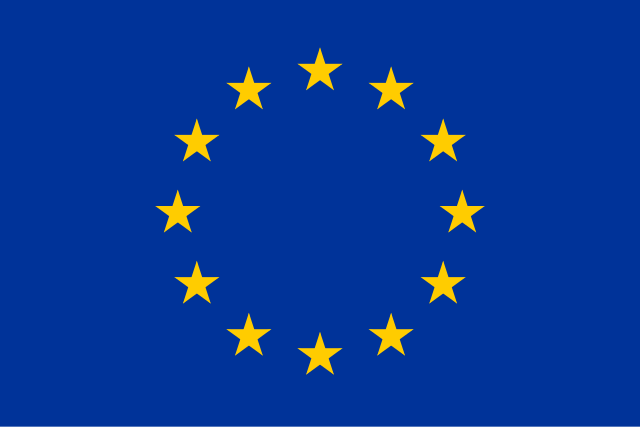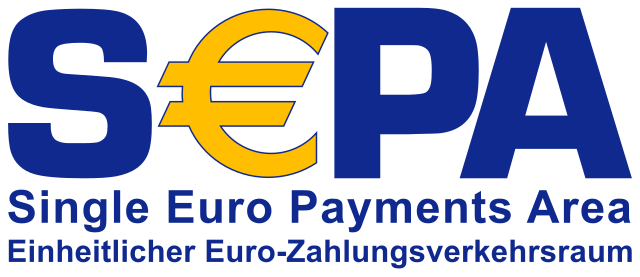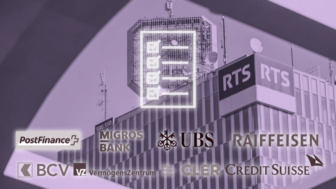
Is Switzerland part of the SEPA zone?
Yes, Switzerland is indeed part of the SEPA zone, along with 35 other European countries, even though it is not part of the European Union. This means that euro payments between Switzerland and other SEPA countries are facilitated, with short processing times and reduced fees (under certain conditions). However, not all Swiss banks handle SEPA transfers in the same way.
What is SEPA and what is it used for?
SEPA (Single Euro Payments Area) is a system that simplifies euro payments across 36 countries, including Switzerland. It allows sending and receiving euro transfers as easily as a local transfer. But how exactly does SEPA work in Switzerland? What are its limitations? Which Swiss banks are compatible? And most importantly, how can you optimize your euro transfers without paying unnecessary fees?
This article answers all the questions that Swiss residents, cross-border workers, expatriates, and businesses may have about using SEPA effectively.
The 5 key points to know about SEPA
- Countries concerned: EU, EFTA (including Switzerland) → see the complete list of SEPA countries.
- Currency used: exclusively in euros (EUR). It’s not possible to send CHF via SEPA.
- Bank details: use of IBAN (BIC is optional).
- Processing times: 1 business day (sometimes 2 depending on the bank).
- Fees: normally identical to those of a domestic transfer.
Concrete example
If you send 1000 EUR from an account in Switzerland to an account in France, your recipient receives exactly 1000 EUR, without hidden fees or exchange commissions. But be careful, if your account is in CHF, conversion fees may apply.
SEPA in Switzerland: which banks are compatible?
Not all Swiss banks offer the same SEPA services. Some apply fees, others impose a CHF → EUR conversion with an internal exchange rate.
| Swiss bank | SEPA transfers (EUR) | SEPA direct debits (SDD) | Hidden fees |
| UBS | ✔ | ✔ (if account in EUR) | CHF → EUR conversion |
| Credit Suisse | ✔ | ✔ (if account in EUR) | CHF → EUR conversion |
| PostFinance | ✔ | ✘ | Transfer fee (2 CHF) + conversion |
| Neon, Yuh, Zak | ✔ | ✘ | CHF → EUR conversion |
| Revolut, Wise, N26 | ✔ | ✔ | No hidden fees |
Tip
If your bank applies excessive fees, consider a multi-currency account with Wise or Revolut, which offer real exchange rates without hidden fees.
How to send a SEPA transfer from Switzerland?
SEPA transfers can be made from a traditional Swiss bank, a neo-bank, or an alternative like Wise.
SEPA via a Swiss bank (UBS, Credit Suisse, PostFinance)
- Log in to your e-banking.
- Go to “Payments” and choose “SEPA transfer”.
- Enter the recipient’s IBAN.
- Indicate the amount in EUR.
- Confirm the transaction.
(Be aware of hidden fees if your account is in CHF)
SEPA via a Swiss neo-bank (Neon, Yuh, Zak)
- Open the app.
- Select “SEPA transfer”.
- Enter the beneficiary’s details.
- Validate.
Neon and Yuh banks allow free SEPA transfers, but the CHF → EUR conversion may cost more than with Wise.
SEPA via Wise or Revolut (optimized solution)
- Add a beneficiary.
- Enter the amount in EUR.
- Make a transfer CHF → Wise/Revolut.
- Wise/Revolut applies the real exchange rate and sends the money via SEPA.
Ideal for reducing fees and getting the best exchange rate.
Can you set up a SEPA direct debit on a Swiss account?
The SEPA Direct Debit (SDD) allows a creditor to automatically debit a bank account. However, Swiss banks generally do not allow SEPA direct debits to be authorized.
The solution : open a Revolut, Wise or N26 account, which offer an IBAN compatible with SEPA Direct Debit.
How to optimize your SEPA payments from Switzerland?



✔ If you send occasional transfers → UBS, Credit Suisse or Neon may be sufficient.
✔ If you have regular payments in euros → Opt for an EUR account.
✔ If you need to pay by SEPA direct debit → Open a Wise or Revolut account.
✔ If you want to pay in euros without fees → Use a Revolut or Wise bank card.
Limitations and subtleties to know about SEPA in Switzerland
SEPA simplifies euro payments, but its use from Switzerland has specific constraints. Here are the key points to know before making a transfer or trying to use SEPA for your regular payments.
- A CHF account cannot directly send a SEPA transfer.
- Swiss banks sometimes apply hidden fees.
- Not all banking institutions support SEPA.
- Instant SEPA transfers are rarely available in Switzerland.
Tip
If your Swiss bank charges high fees, consider Wise or Revolut, which allow SEPA transfers without surcharge.
Alternatives to SEPA transfers in Switzerland
If your Swiss bank charges high fees on SEPA transfers or doesn’t support certain features, here are the alternatives to consider:
✔ Multi-currency account (Revolut, Wise, N26): allows you to store euros and send SEPA transfers without hidden fees.
✔ Swiss banks with euro accounts: UBS, Credit Suisse and some cantonal banks offer EUR accounts to avoid conversion fees.
✔ Bank cards optimized for euro payments: use a Revolut, Wise or Neon card to pay in euros without surcharge.
Concrete example:
- You are a cross-border worker and need to send 2000 € to France each month.
- With a CHF account at UBS, you pay conversion fees.
- With a Revolut account in EUR, you send the money without loss related to the exchange rate.
The guide to payment methods in Switzerland 🇨🇭 allows you to review the essential options for daily life in Switzerland in order to prioritize one payment method or another.
Frequently Asked Questions about SEPA in Switzerland (FAQ and answers)
Can you make a SEPA transfer from a CHF account in Switzerland?
No, a SEPA transfer must be made in euros. If your account is in CHF, your bank will convert the amount to EUR before sending the transfer, often with exchange fees.
What are the fees of Swiss banks for a SEPA transfer?
It depends on the banks. Some (like UBS and Neon) offer free SEPA transfers if the account is in euros. Others, like PostFinance, apply fixed fees and non-optimized exchange rates.
Is SEPA in Switzerland identical to SEPA in Europe 🇪🇺?
Yes, SEPA transfers from Switzerland work in the same way as those made between eurozone countries. However, some restrictions exist, particularly on SEPA direct debits.
Which Countries Are Part of the SEPA Zone?
The SEPA zone includes 36 countries, not just those in the European Union, nor only those using the euro.
It also includes countries like Switzerland, the United Kingdom, Norway, or Poland, which participate in SEPA transfers while keeping their own currency.
See the list of SEPA countries and the risks of conversion
What are the alternatives to SEPA transfers from Switzerland?
If your bank applies fees that are too high, alternatives like Wise, Revolut and N26 allow you to send SEPA transfers without hidden fees and with a real exchange rate.
The List of SEPA Countries in %%Currentyear%%
All countries in this list are part of the SEPA zone.
The tables indicate whether a transfer in euros is converted automatically into the other currency upon arrival (which may incur fees, especially if the recipient account is not in EUR).
List of SEPA Countries Using the Euro (No Conversion Necessary)
| Country | Local Currency | Automatic Conversion to EUR? |
| Germany (DE) | EUR | No |
| Austria (AT) | EUR | No |
| Belgium (BE) | EUR | No |
| Cyprus (CY) | EUR | No |
| Croatia (HR) | EUR | No |
| Spain (ES) | EUR | No |
| Estonia (EE) | EUR | No |
| Finland (FI) | EUR | No |
| France (FR) | EUR | No |
| Greece (GR) | EUR | No |
| Ireland (IE) | EUR | No |
| Italy (IT) | EUR | No |
| Latvia (LV) | EUR | No |
| Lithuania (LT) | EUR | No |
| Luxembourg (LU) | EUR | No |
| Malta (MT) | EUR | No |
| Netherlands (NL) | EUR | No |
| Portugal (PT) | EUR | No |
| Slovakia (SK) | EUR | No |
| Slovenia (SI) | EUR | No |
| Andorra (AD) | EUR | No |
| Monaco (MC) | EUR | No |
| San Marino (SM) | EUR | No |
| Vatican City (VA) | EUR | No |
List of SEPA Countries Outside the Eurozone (Conversion Depends on Account Currency)
| Country | Local Currency | Automatic Conversion to EUR? | Notes |
| Switzerland (CH) | CHF | Yes, unless the account is in EUR | Accounts in CHF by default |
| United Kingdom (GB) | GBP | Yes, unless the account is in EUR | IBAN accepted, but frequent conversion |
| Norway (NO) | NOK | Yes, unless the account is in EUR | Some banks apply high SEPA fees |
| Iceland (IS) | ISK | Yes, unless the account is in EUR | SEPA format recognized, but rare |
| Liechtenstein (LI) | CHF | Yes, unless the account is in EUR | Same logic as Switzerland |
| Denmark (DK) | DKK | Yes, unless the account is in EUR | Systematic conversion on DKK accounts |
| Sweden (SE) | SEK | Yes, unless the account is in EUR | Conversion almost always applied |
| Hungary (HU) | HUF | Yes, unless the account is in EUR | Conversion varies by bank |
| Poland (PL) | PLN | Yes, unless the account is in EUR | Beware of fees on PLN accounts |
| Czech Republic (CZ) | CZK | Yes, unless the account is in EUR | Frequent conversion even if IBAN accepted |
| Romania (RO) | RON | Yes, unless the account is in EUR | EUR account recommended for SEPA transfers |
| Bulgaria (BG) | BGN | Yes, unless the account is in EUR | Almost systematic conversion on local accounts |
🧠 Key Points to Remember (SEPA in Practice)
- If the country uses the euro, no conversion is made: the SEPA transfer in EUR is processed locally, without currency-related fees.
- If the country uses another currency, conversion occurs automatically if the recipient account is not in euros.
- It is always preferable to confirm that the recipient’s account is indeed in EUR, even in a SEPA country, to avoid any unpleasant surprises.
Conclusion on SEPA payments in Switzerland
SEPA is an excellent way to simplify euro payments from Switzerland, but you need to choose the right strategy to avoid hidden fees. Comparing bank accounts is an asset for optimizing euro payments.
By understanding the limitations of SEPA in Switzerland and adapting your banking strategy, you can make international payments quickly and without unnecessary additional costs.






Unfortunately, even with a euro account in Switzerland, there’s no guarantee that banks won’t try to charge excessive SEPA fees.
I transferred money from a euro account in the EU to my Swiss euro account via SEPA transfer, and €8 were deducted as a “transaction fee” without any notice.
Such fees should normally only apply to international transfers in the currency of the recipient country.
Hi and thanks for your feedback.
It shows that even with a euro account in Switzerland, unexpected fees can still happen.
Was it with a neobank or a traditional bank?